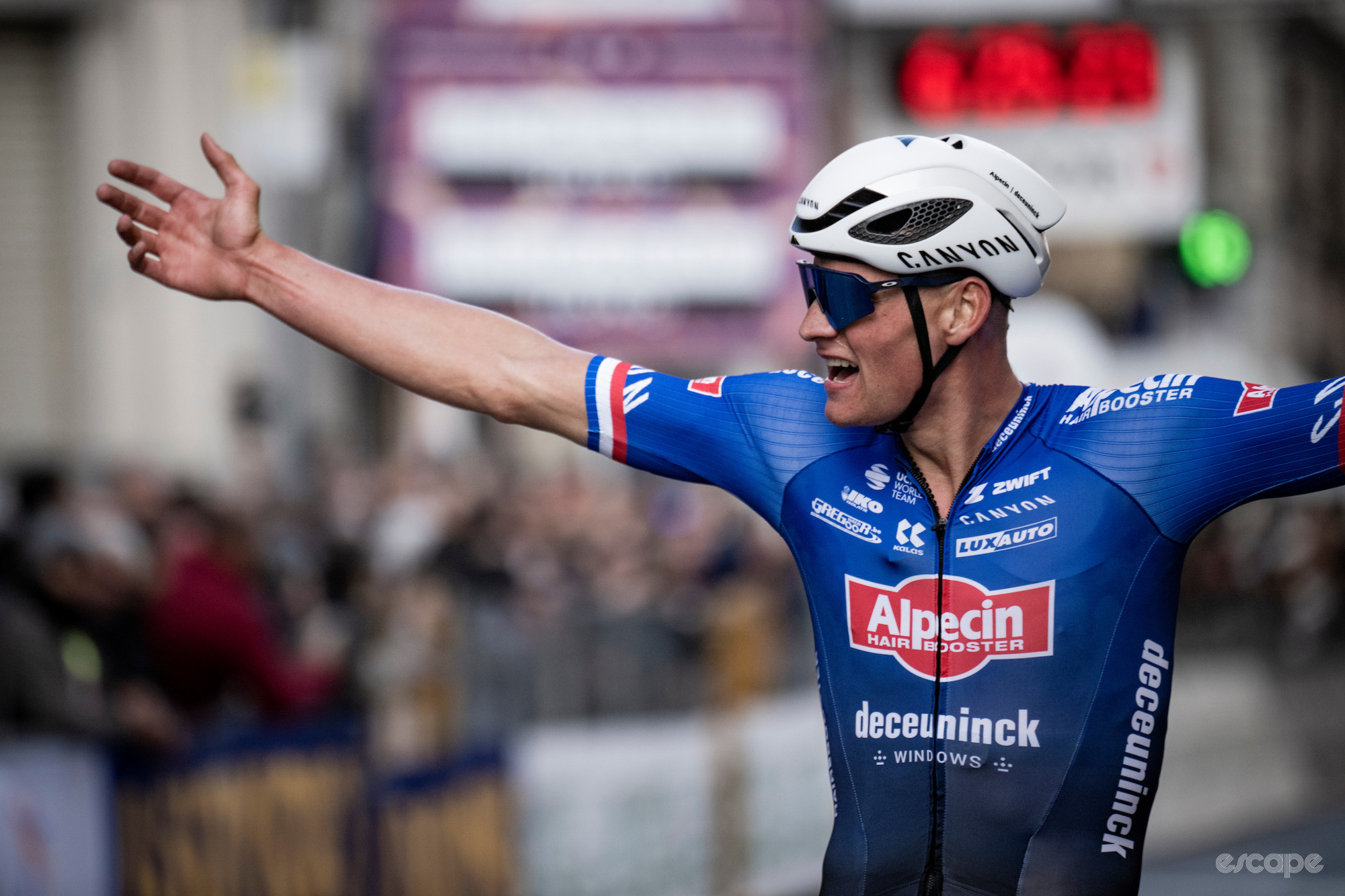The attack wasn’t unexpected, but nobody could do a thing about it. Mathieu van der Poel, on his “best level,” he said after the race, played Milan-San Remo to perfection.
There are countless moments that lead to any victory. Decisions made, a bit of luck, and always strong legs. Van der Poel benefitted from wind in the right place, used Tadej Pogačar’s strength against him, and pulled away into a tailwind that would ensure he wasn’t brought back.
Here are a few of the key moments.
Bit of a headwind on the Cipressa
“It was easier on the Cipressa than expected,” Wout van Aert said after the finish. “There was more headwind than everybody thought.”
Nobody expected easy because the Cipressa was crucial to UAE’s gameplan. No doubt Pogačar and his team are ruing that slight shift in wind. Pogačar might be many things but he is not, under normal circumstances, as punchy as Van Aert or Van der Poel. For his inevitable attack on the Poggio to find success, he needed to be the freshest rider in the bunch by some margin. That would require a fast, hard Cipressa.
It would also, as it turns out, require a tailwind on the Cipressa. Diego Ulissi did what he could, but UAE didn’t have enough firepower to overcome that meteorological reality.
You can see when the bunch is going fast and hard on TV. The peloton takes the form of a long line of riders. What we saw instead was a clump. Not hard enough – or a bit too much headwind.
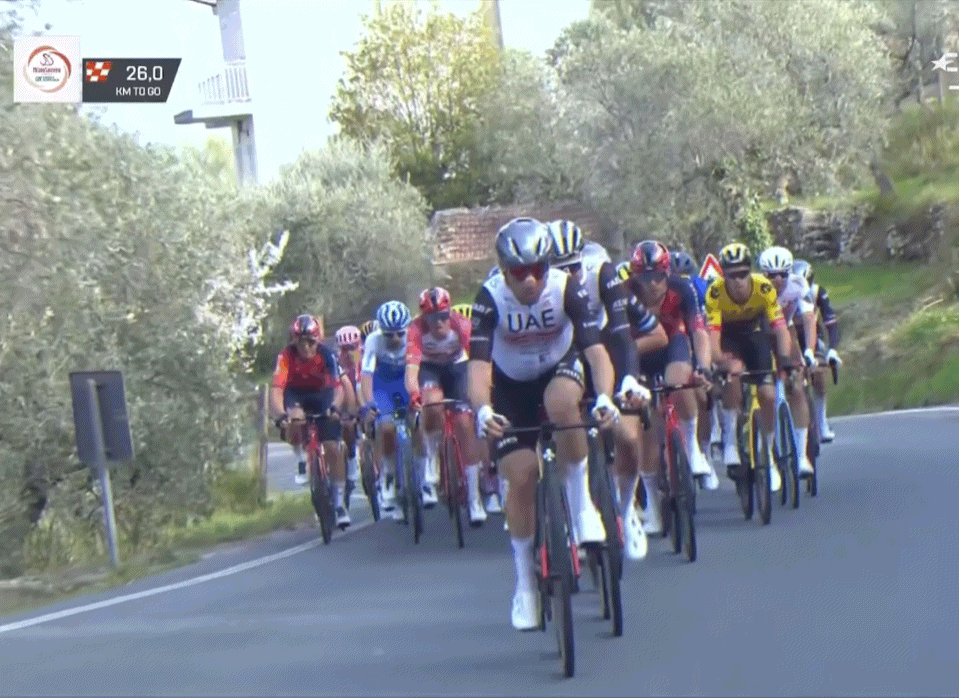
Van der Poel knows where it narrows
There’s a nasty narrowing right near the top of the Cipressa as the road drops to one small lane between two buildings. It’s wide enough for about three riders, meaning anybody who isn’t in the front half dozen or so is likely to hit the brakes.
As further proof that both the Cipressa wasn’t hard enough and that van der Poel was on a superb day, he popped a small acceleration just ahead of this narrowing. The wide peloton shrunk down behind him, losing momentum, as he moved off the front almost effortlessly. His teammate Jasper Philipsen followed.
It wasn’t a moment that won him the race. It perhaps saved a small amount of energy as he took a comfortable route down the Cipressa, avoiding the accordion effect caused by each tight corner. The moment was more an indication of form. The top of the Cipressa should be the tail end of a near full-gas effort for most of the peloton. Van der Poel didn’t seem to feel it.
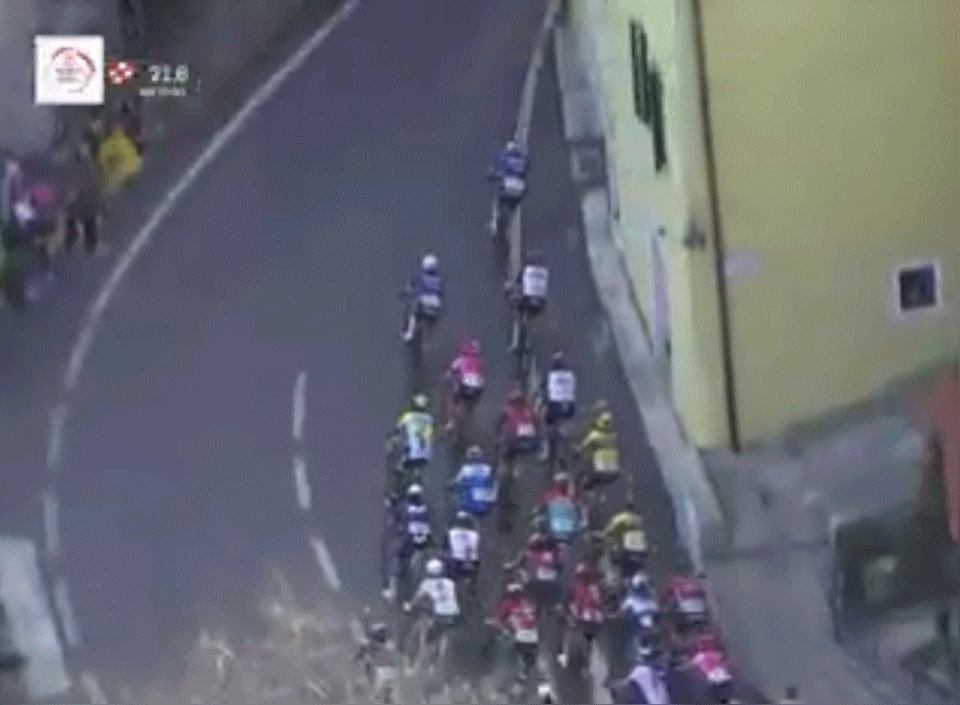
Adam Blythe’s jumper
No material impact on the race but seemed worth a mention.

Trentin’s sneaky sit up
The Cipressa didn’t go fully to plan. But UAE had two more crucial riders in the form of Tim Wellens and Matteo Trentin.
Wellens put in the effort halfway up the Poggio that finally began to truly separate the field. With Pogačar on his wheel, he smashed his way past the 7km to go marker, pulling the peloton into one long line. THAT is what hard looks like. Eight riders behind, Trentin had enough. He sat up slowly, letting the gap open over a few seconds. It took the riders on his wheel a few moments to notice, and by then it was too late. The gap had opened, and closing it would require an enormous effort. About 300 meters later, Pogačar hit out from a group that was now down to 7.
Trentin was probably truly blown. But the manner in which he called it a day gave his team leader a smaller group to deal with.
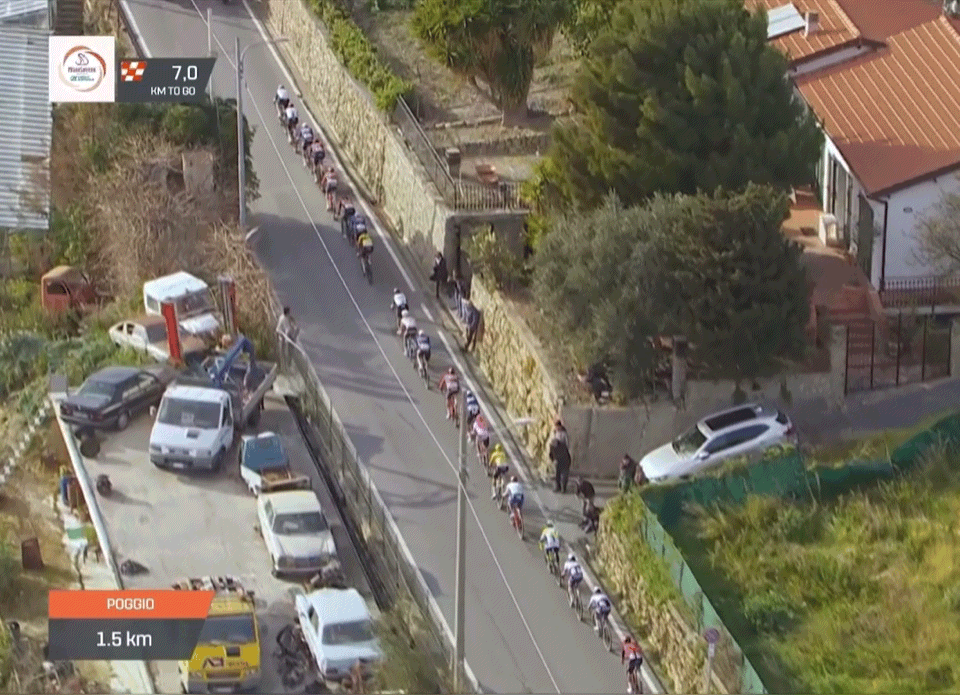
Van der Poel’s Poggio patience
We knew, by this point, that van der Poel was on a good day. The little move on the Cipressa proved that, as did his ease of positioning lower on the lower Poggio. On the Poggio, tactics turn to using the strengths and weaknesses of other riders against them. In this case, Pogačar was the most obvious target.
Rarely can a rider brute force his way into a San Remo victory, though Pogačar was always destined to try. Van der Poel was careful, and patient. Pogačar was guaranteed to go, it was just a matter of how far Wellens would get him. Van der Poel followed Van Aert everywhere in the last 2 kilometers of the climb, and used the Belgian to close a series of small gaps as Pogačar accelerated.
Every acceleration counts at the end of this race. Thanks to his patience and careful wheel following, Van der Poel set himself up to be the strongest in the final moments of the climb, when he went for it.
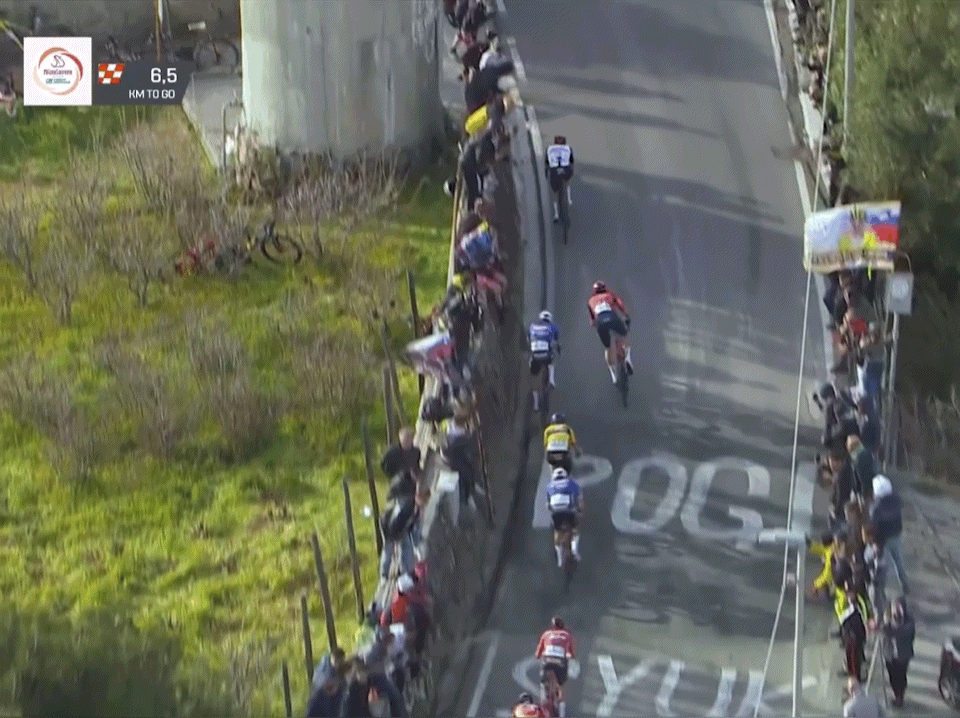
Van der Poel’s attack
And go for it he did. We missed the first few seconds as the cameras watched last year’s winner Matej Mohorič in the chasing group. Van der Poel came from fourth wheel out of a group of four, just as Pogačar was beginning to fade. None could respond. Van Aert, who had just closed a gap while Van der Poel followed, couldn’t follow. Van der Poel had 30 meters at the top corner, with a tailwind to the finish line.
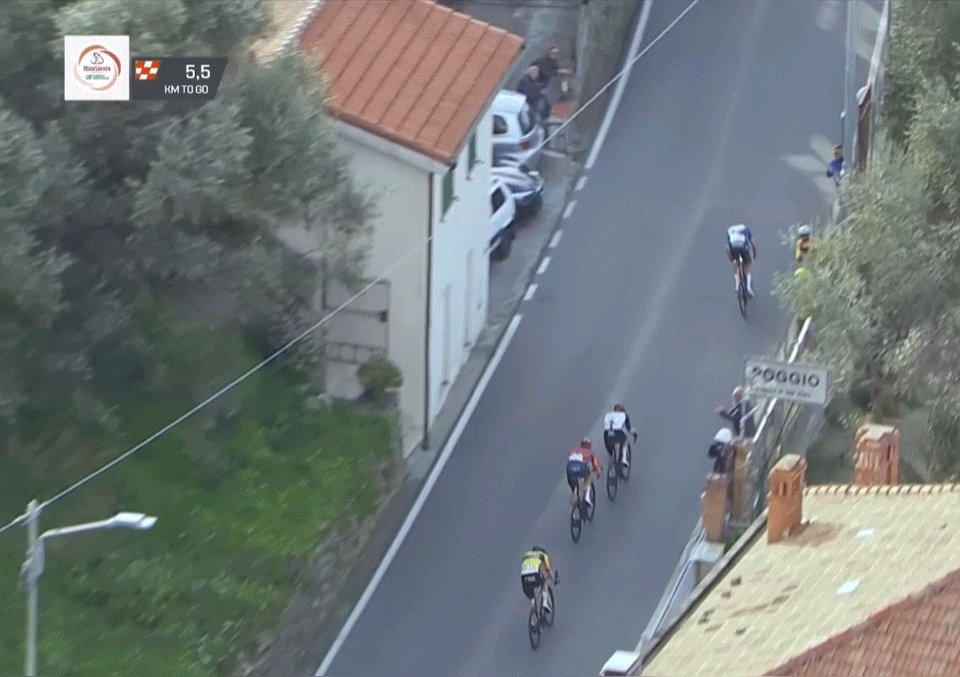
Ganna Gaps on the descent
Filippo Ganna is not a bad descender. But ask him to chase Wout van Aert down the Poggio and gaps will form.
They did. And closing them time after time surely had an impact on Ganna’s ability to chase once they reached the flat stretches of Via Roma. He was clearly still recovering once the descent flattened out, for at least 30 seconds or so. He and Pogačar both took a series of short pulls, not out of gamesmanship but out of a lack of ability to do much more.
If those gaps hadn’t formed, and Ganna was comfortably on the wheel of Van Aert all the way down the Poggio, could he have closed the gap? Catching van der Poel with a tailwind was always going to be a huge ask, but the best pursuiter in the world is one of the few you might bet on.
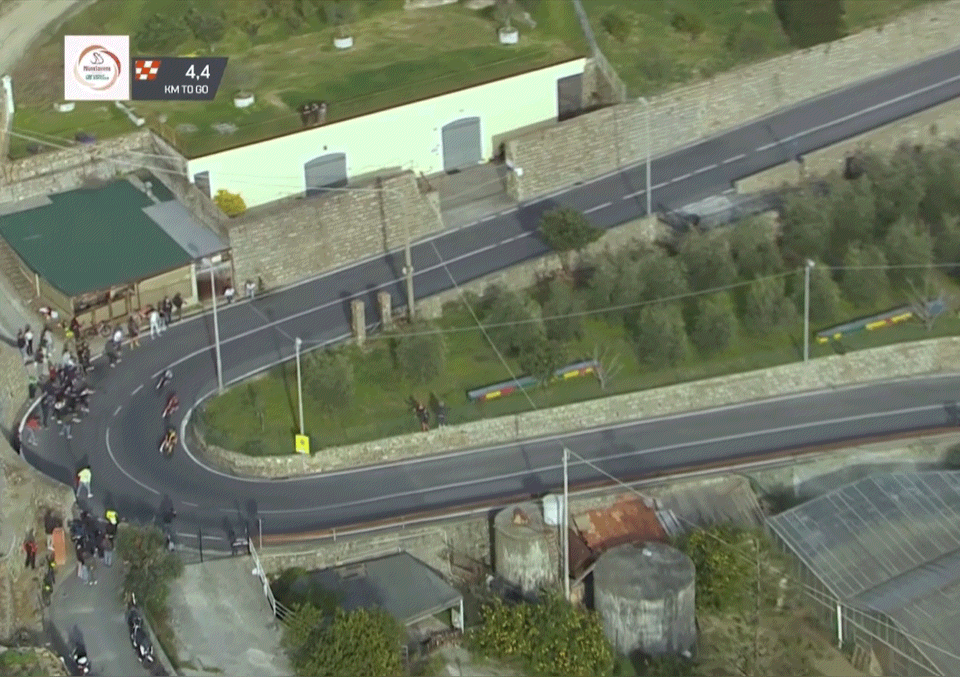
Once van der Poel hit via Roma with a gap that size, a tailwind, and tired legs behind, catching was was going to be next to impossible. It was a monument victory that, as most do, combined impeccable timing, a bit of luck, and superb legs.
What did you think of this story?
